
The War in Ukraine: Europe’s meddling
An overview of the Ukraine crisis, and the central role of the EU, aided by the US
Last week, I wrote an article chronicling the undemocratic nature of the European Union, and repeated efforts by the EU elites to deceive the people, and to force their own will through, at all cost.
As if new evidence was necessary, we can look at the crisis in Ukraine. People forget the main reason why this conflict started. No, it is not because Putin is an ogre, or some hold-over fossil from a by-gone Cold War Era, dreaming of olden glory and saber rattling. Neither because he would be some kind of imperialist or war-criminal.
Let’s go back to 2010.
In a hotly contested campaign, Viktor Yanukovych won from Yulia Tymoshenko in a run-off election, with 48.95% of the votes, against Tymoshenko’s 45.747%. Tymoshenko claimed irregularities, and the Supreme Administrative Court of Ukraine suspended the results after an appeal by her, but did NOT cancel his inauguration. Days before the inauguration, Tymoshenko withdrew her appeal, and Yanukovych was sworn in as duly elected president of Ukraine.
(Notice also the sharp division in linguistic groups, and compare with the current map of actual Russian military operations. This maps explains a lot just by itself!)
Fast forward a few years, to November 2013. The EU courted Yanukovyc and had offered Ukraine an ‘Association Agreement’. This is, by their own definition: “An association agreement is a bilateral agreement between the EU and a third country. In the context of accession to the EU, it serves as the basis for implementation of the accession process. Turkey currently has an association agreement.”
In the run-up to the signing of this agreement in Vilnius in 2013, the Ukrainian parliament was working hard to pass the so-called ‘European Laws’ in rapid succession, one of the conditions that the EU had imposed in the run-up to Ukraine officially entering into the Association Agreement. One of the points of contention was the fact that Tymoshenko’s earlier opponent, Yulia Tymoshenko, had been imprisoned since 2011 on corruption and embezzlement charges, as well as abuse of power. The EU strongly protested this, as they claimed that the jailing and prosecution of a prominent opposition leader was abusive and meddling with open and free elections, and that the courts violated international standards for fair and transparent processes.
(Sounds familiar?)
Russia was pressuring Ukraine as well, in the meantime, up to and including an embargo on goods from Ukraine. In the end, Ukraine rejected the Association Agreement, and signaled this was done for ‘reasons of national security’, and to repair the trade relation with Russia. But her own internal economic situation, and a heavy debt burden, which would make the necessary reforms that were required under the Association Agreement very difficult and destabilizing. The benefits of such reforms would only be felt long term, and the Yanukovych government deemed it more prudent to postpone this until Ukraine got stronger first. It is political suicide to implement budgetary policies that demand budget cuts in a pre-election period, without any immediate gains to show the population.
What is interesting, is that an analysis by the Centre for Eastern Studies, written in November 2013, right when Ukraine announced their decision NOT to enter into the Association Agreement, noted that the initial protests had peaked already by time of their publication, and numbered only 150.000 in the biggest cities together.
They wrote:
“The government decided not to use force on a larger scale (although ‘tent cities’ in places including Odessa and Dnipropetrovsk were broken up); their hope is that after the summit in Vilnius ends, the protests will cease of their own accord. Indeed, it seems that the weak and divided opposition will be unable to maintain the mood of protest among the public, and within a few days the scale of the protests will drop off.”
And they explained in their forecast that Janukovych was one of the most popular politicians in Ukraine at that time, with poll numbers of 19% for the presidential elections that next year (a year out of elections, in a very crowded multi-party field, when he won the first round in 2010 with 35%, and the next two had 25% and 13% of the votes).
And on February 21, 2014, not even 3 months later, President Janukovych had to flee Kiev, and was voted out of the presidency by the Ukrainian parliament.
What happened? Was the Centre for Eastern Studies that wrong? I don’t think so.
Enter our own US senator John McCain and then assistant Secretary of State for European and Eurasian Affairs.
On December 15, 2013, McCain visited the protests, with his mere presence and status giving the clear ‘support’ of foreign powers to the protests. Meanwhile, behind the scenes, Asst. Sec. of State Nuland (the same who just a few months ago had to admit in a hearing that there WERE biolabs in that same Ukraine, and had to be bailed out by Sen. Rubio), was discussing with US ambassador to Ukraine Geoffey Pyatt who would be part of their preferred post-Yanukovych government. This is in DECEMBER, 2 months still before Yanukovych was ousted! This discussion was very specific, and assumed as an untold fact that Yanukovych would be replaced, and that there would be a new government to fill in. The Obama administration WAS working, behind the scenes, meddling directly with the internal politics and affairs of Ukraine!
But as McCain was on the ground, visibly giving a suggestion of support, Obama could claim he was not involved: what this Republican Senator was doing, was not in line with his own foreign policy! Yet behind the scenes, his own people were busy discussing the next government.
A month later, the protests escalated, and became violent. On January 19-22, the first people were killed in the streets. The next month, the deadliest protests took place, with the infamous snipers firing into the crowds, in the days immediately before it all ended. Moved by the level of killing that was going on, the President signed an agreement for the formation of an interim government (“No power is worth so many lives”). The next day, the police suddenly and inexplicably left Kiev, the protestors -which included very organized elements of Azov and Right Sector- swarmed the government buildings, Yanukovich had to flee, and about 3 quarters of the members of parliament gathered to vote to oust Yanukovych and install their own interim president.
Yanukovych claimed this vote was illegal, and likely coerced, and turned to Russia for support. The Russians, on their end, considered what had happened a coup, and did not recognize the new government. In the South and East of the country, the region where Yanukovych had strong support, saw widespread protests, some in support of the coup in Kiev, but many also against it.
This continued to escalate, to the point where Russia stepped in militarily, annexed Crimea, and where Luhansk and Donetsk broke away as independent states, a situation that started a war between Ukraine and those two new states, and since February this year, a full blown military involvement and occupation of Russia in Ukraine, well beyond the borders of Luhansk and Donetsk.
It reported by outlets such as CBS that the police had left their positions. This article claimed “A group of protesters in helmets and shields stood guard at the president's office Saturday. No police were in sight. […] Police on Friday retreated from their positions in Kiev's government district, and the night passed quietly.”
AP had reported (as compiled by The Guardian): “Police abandoned posts around the capital, and protesters took up positions around the presidential office and residence.”
And even people on the ground noticed:

Who gave that order? Clearly NOT the president and his entourage, who had every intent to maintain at least a semblance of order and control until the transition he had just signed had taken place. The retreat and subsequent power vacuum on the streets paved the way for the protestors, who were well organized, including Azov and Right Sector militants, to take over the centers of power and change the outcome of the political process.
It has since also come to light that the sniper killings (responsibly for massively inciting the population and swaying public opinion) might have been done as a special operation. There are three news sources that are very interesting, and telling.
First, CNN reported about a phone call between the Estonian Foreign Minister Urmas Paet and Foreign Affairs and Security Policy director Catherine Ashton that had been intercepted. In the call, Paet relayed the story from a local doctor who testified that the protesters and members of the riot policy who had been shot by snipers, where shot by the SAME snipers. Paet, of course, claimed afterwards that he did not imply opposition involvement, and the doctor in question said the same: no implication of the opposition. But she did say that the government (the new one) had informed her an investigation was underway.
Second, a Ukrainian newspaper reported a story (since scrubbed from the internet, but available through web archives) from a former deputy head of the Ukrainian Security Forces, the SBU. He claimed that the snipers were from the Ministry of Foreign Affairs and the SBU, and NOT foreign agents, who acted based on contingency plans dating back to Soviet times. In the interview, he stated "In addition to this, snipers received orders to shoot not only protesters, but also police forces. This was all done in order to escalate the conflict, in order to justify the police operation to clear Maidan." He further claimed that top officials, including the new Minister of Foreign Affairs, Avakov, were protecting those sniper units, to prevent backlash. It was Avakov who said this conflict was provoked by a ‘third party’, and was ‘investigating’ this.
And third, a March 13, 2014 report by Daily Beast shows pictures that indicate it was the SBU that was responsible for the sniper killings.
Of course, the Daily Beast makes the link to the KGB, who trained the Ukrainian SBU, and suggests that the Russians had maintained deep links in the SBU and were now using those ties to support the pro-Russian Yanukovich.
But given that the Kiev police left the city unexpectedly that last day leading directly to the shift in power in Kiev and the overthrowing of Yanukovych, it is not impossible to suggest high level support from government officials and organizations to oust Yanukovych. But the SBU Director at that time is quite intriguing: Oleksandr Yakymenko was a Russian military pilot, serving in the Russian air force until 1998, then started working for the Donetsk State Aviation Company. In 2010 he started a meteoric rise in the SBU, first as Head of the Sevastopol office, a year later of the whole Donetsk Oblast, a year later First Deputy Director, and then Director. He claimed to have worked for the SBU from 1999 until 2007, but nobody knows where or in what capacity.
The day after the coup, Valentyn Nalyvaichenko was appointed to check into the SBU, and immediately announced that the full leadership of the SBU quit. Two days later, Yakymenko was formally relieved of duty, and Nalyvaichenko was appointed the new director. Several days later, Yakymenko surfaced in Russia, together with another 15 former top SBU officials.
As an aside, a week or so ago, on July 18, Zelensky fired the SBU director, a childhood friend of his. Reason given by Zelensky was the fact that “651 cases of alleged treason and collaboration [from SBU officials/members] had been opened against prosecutorial and law enforcement officials”.
The Daily Beast records Yakymenko as suggesting that foreign snipers might have been hired by the Maidan leaders.
Not strange, given the ties between the Russian SFB and the SBU, or the apparent ‘suicides’ of at least 8 officials from the Yanukovych government in the immediate aftermath of the coup (in later reports investigated as murders) telling the former spy chief it was time to skedaddle. Still, the story about the snipers acting on Russian orders makes little sense. Why would they want to escalate the protests like that? Risk (to the point of almost certainty) galvanizing the protestors? Giving them the sympathy and thus unquestionable support from the international community?
What IS clear, in this case, that we are dealing with information warfare: who to believe?
One last element to consider: the Daily Beast was given a series of photographs, taken from those police and SBU units in the courtyard of the SBU office in Kiev itself, as they geared up. Pictures of high enough quality to identify the people, and the equipment they had brought. Clearly, someone within the SBU was taking those pictures that day, and decided to leak them to the Daily Beast, of all groups. Daily Beast claims it was ‘ordinary Ukrainians’ who filmed all this. Would an elite unit as this be caught so in the open preparing for such killing sprees? Linked to their own office? And not notice mere civilians filming them?
Another interesting tidbit: Daily Beast claims the time stamps of the images are from February 20, and another morning of busy activity the next day, where the SBU units are seen loading safes and equipment in vans, and smoke from a chimney seems to indicate the burning of documents. But on this day, there is no need for sudden retreats yet. Yanukovych had announced an interim government would be formed, and called for early elections, on the day the SBU was supposedly cleaning up all evidence in their office. Daily Beast said that Yanukovich was already in flight, but this is wrong: he only fled the NEXT day, after the police had suddenly left Kiev to the protestors (which includes, don’t forget, elements of Azov and Right Sector!).
This is a typical counter-coup. Yanukovych had caved, basically, and with the opposition leaders had signed an agreement that an interim government was to be formed, with early elections. But instead of letting the legal and due process play out, with the People of Ukraine have a say as well, some high placed people had the police leave the city of Kiev (!!), so the protestors could storm the government buildings. There, in that chaos and power vacuum and uncertainty, a large group (but not all) of the parliament was gathered, they voted Yanukovych out, and took charge themselves, forming their own government, in breach with the Ukrainian constitution.
The rule of law was NOT followed, and some people took the opportunity of that declaration by Yanukovich, combined by the inexplicable retreat from the Kiev police, to take over the legal process that Yanukovych had set into motion for a proper change of power.
And within mere weeks of the ousting of Yanukovych, the new president, Yatsenyuk, signed the Association Agreement with the EU! The EU did not waste ANY time to get what they wanted, and did not wait until things had calmed down in Ukraine before approaching their brand new government about something as important as that agreement.
When presidents the EU did not like win elections, and then follow up with actions the EU did not like, those presidents get immediately ‘removed’. Obviously by ‘grassroots movements’, without any foreign support! American senators show up, and American officials prepared and approve (!!) the list of next government officials (a preferred list that was followed by the crowd that had taken over parliament! How did they know? Who in that crowd guided the vote towards that end? This was NOT spontaneous!), before the current president had resigned or any new elections were even talked about! And with snipers firing on both police and protestors, and very high-level officials ordering the police to leave Kiev… There was an agenda, that has no regards for the democratic process, even if it nominally purports to defend democracy.
For a very interesting write-up of the American meddling in those fateful days in Ukraine, the Cato Institute provided this article, titled “America’s Ukraine Hypocrisy”. It chronicles, among other things, the link with Biden: “Pyatt stated bluntly that “we want to try to get somebody with an international personality to come out here and help to midwife this thing [the political transition].” Nuland clearly had Vice President Joe Biden in mind for that role. Noting that the vice president’s national security adviser was in direct contact with her, Nuland related that she told him “probably tomorrow for an atta‐boy and to get the details to stick. So Biden’s willing.””
Amazing, how it all comes together, right? Several years later, and Burisma, Hunter, Joe’s own blackmail to stop unwanted legal investigations, and the ties of the Biden clan with other firms linked to the biolabs, and a whole network of reasons and interests emerge, that begin to paint a picture of WHY the US was meddling: it wasn’t just for geopolitical reasons!
Cato Institute’s article ends with this:
”Both the Obama administration and most of the American news media portrayed the Euromaidan Revolution as a spontaneous, popular uprising against a corrupt and brutal government.
A February 24, 2014, Washington Post editorial celebrated the Maidan demonstrators and their successful campaign to overthrow Yanukovych. The “moves were democratic,” the Washington Post concluded, and “Kiev is now controlled by pro‐Western parties.”
It was a grotesque distortion to portray the events in Ukraine as a purely indigenous, popular uprising. The Nuland‐Pyatt telephone conversation and other actions confirm that the United States was considerably more than a passive observer to the turbulence. Instead, U.S. officials were blatantly meddling in Ukraine. Such conduct was utterly improper. The United States had no right to try to orchestrate political outcomes in another country—especially one on the border of another great power. It is no wonder that Russia reacted badly to the unconstitutional ouster of an elected, pro‐Russian government—an ouster that occurred not only with Washington’s blessing, but apparently with its assistance.”
If people at Cato’s Institue can piece this together like that, and even I am able to do so, you bet the Russians can do a whole lot better. They know EXACTLY what happened, and who was involved in this coup. They know about Nuland and McCain, and the American ambassador. They know about the EU’s disapproval, and the very quick reversal of the rejection of the Association Agreement, paving the way also for a pro-EU regime and public opinion to steer towards NATO membership as well. And they seemed to have been aware about the biolabs from the very beginning, as well. The first phase included attacks towards Kiev, not just around Crimea, Luhansk, Donestk and Kharkiv. Those seemed to have served 2 purposes: tie up forces away from the main objective in the East and South, and to get close to several of the biolabs around Kiev. Now the Russians retreated completely from Kiev’s direction, and the area they focus on with their offensives matches the blue hued areas from the map in the beginning of this article. I dare bet, not a coincidence.
In conclusion: It appears that the EU elites, aided by their friends and allies in the Obama Administration (back then, and now again), once again could not accept defeat and rejection, as chronicled in my last article, but now set the stage in Ukraine, a sovereign nation, to align with EU/US interests. At all costs.
I don’t think I’m far off in that assessment. If I did miss anything, or you think I got part of all of it wrong, let me know in the comments.
As it stands, this helps explain the current situation, the position of the EU, and the increasing frustration of the Russians, not just with Ukraine, but with the whole EU as well.




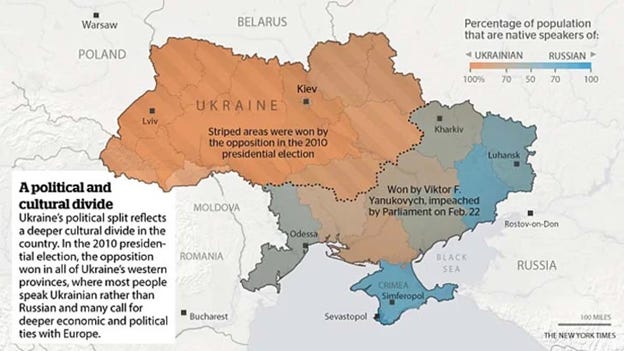
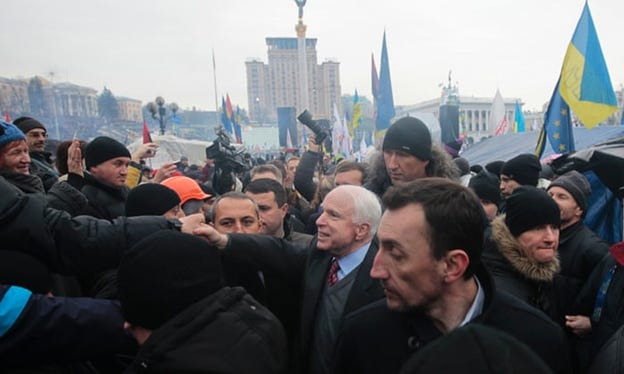
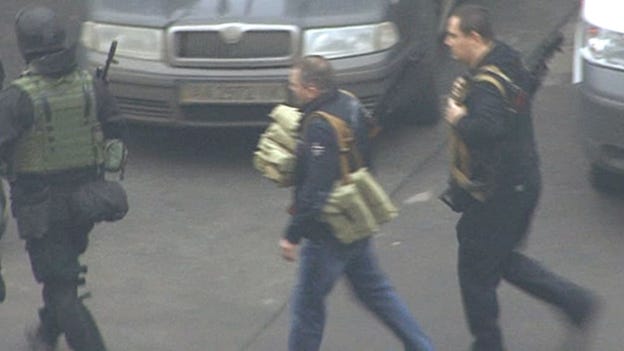
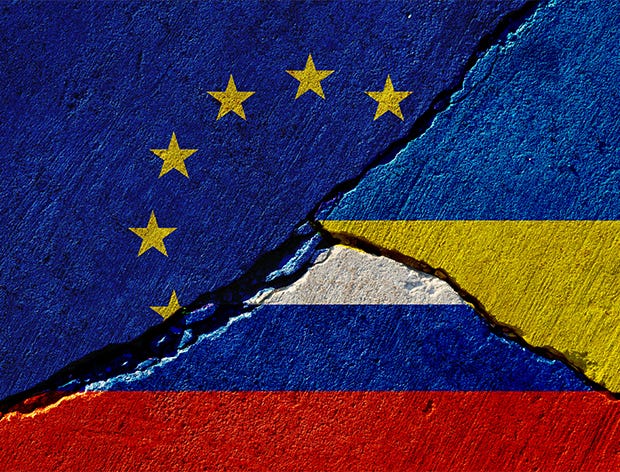







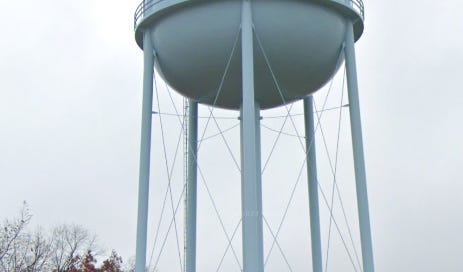

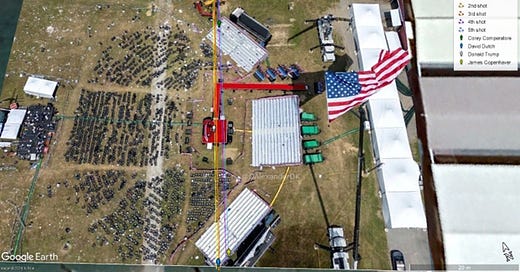

Great essay.
I am a proud American but as time goes by, I find myself deeply ashamed of our government. At this point there is no difference who is in charge. It is just disgusting. But what role did I play in allowing that to happen by being a lazy citizen?